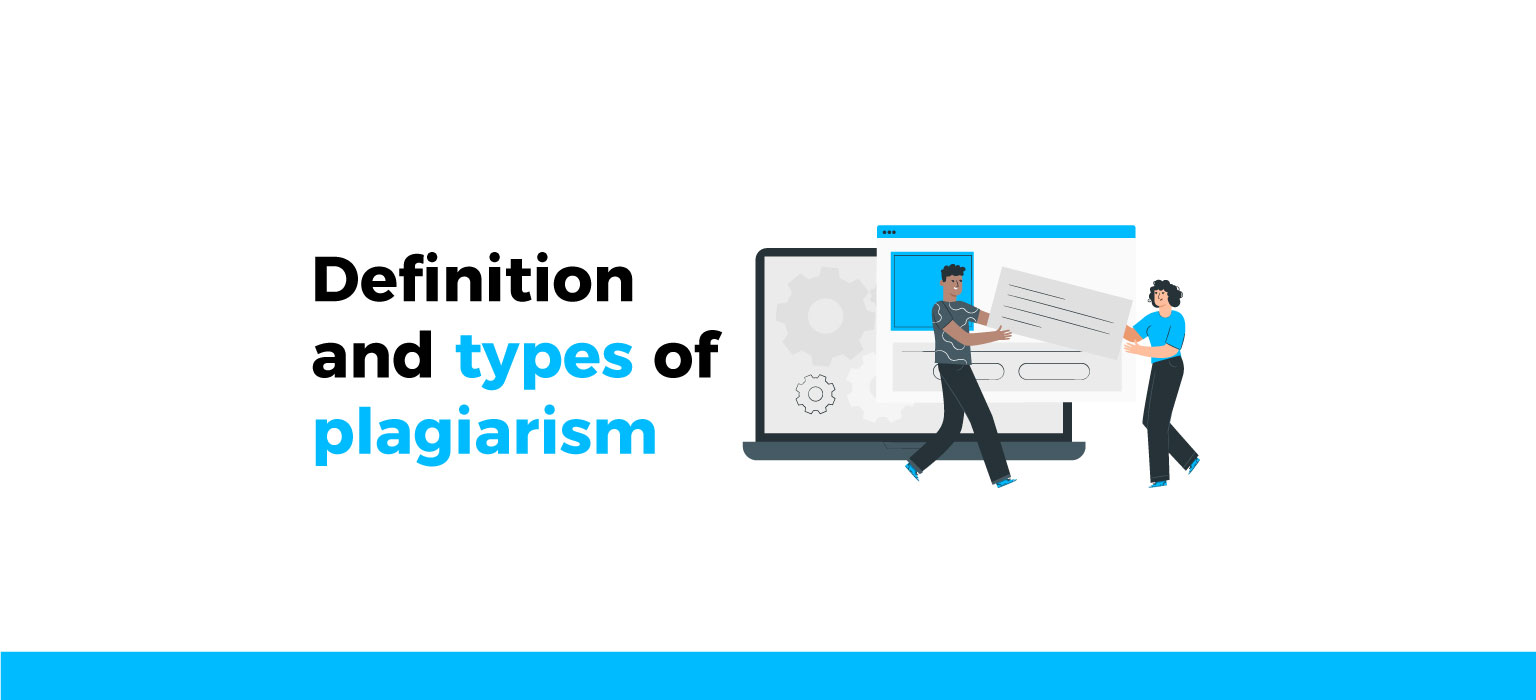Plagiarism derives from the Latin word ‘plagirius’ (stealer) where it gained meaning as early as the first century by a Roman poet Martial. Martial accused another poet in the form that he had copied his verses, showing them in his work as if they were his own.
The concept of plagiarism entered English in 1620 and from here the concept of plagiarism continued to this day.
People in antiquity did not know about plagiarism and this affected their writings. As long as there was no knowledge of plagiarism, they did not know how to punish it.
This phenomenon began to be seen as immoral sometime in the age of enlightenment during the 17th century.
In antiquity it was difficult to detect plagiarism because there was a lack of education and people did not know about it, at that time the Internet did not exist and it was also a deficiency.
In addition to these, an obstacle in the detection of plagiarism was the long journey, even if someone knew about plagiarism, it was difficult to travel to analyze it.
A Roman architect and engineer Vitruvius acknowledged the debt he felt towards previous writers and attributed them. He also said that writers who steal writings and present them as their own deserve reprimands, Vitruvius strongly condemned plagiarism as a concept.
He also shows that Aristophanes was a judge of the poetry competition, he managed to catch his colleagues with plagiarism during the presentations of their creations.
The king of that time forced the plagiarists to confess themselves as thieves of the works and shamefully condemned them in front of the citizens.
The evolution of plagiarism
Unlike antiquity, in the Renaissance, the concept of plagiarism changed. The changes we saw in the renaissance began with the changing context of plagiarism, authors began to assert themselves in their creations by insisting on their intellectual property.
But despite this, preventing plagiarism was impossible, as it continues to be today. Although writers slowly became aware of this, plagiarism continued but still went unpunished.
In the 18th century, views on plagiarism were changing all the time, and attitudes against plagiarism were strengthening. Copyright laws began to be created, people were expected to start creating original works and not repeat the works of others.
In the 19th century, historians insisted on deeper and more authentic studies that treated sources well in such a way as footnotes. Academics of this century somewhat define the meaning of plagiarism and set rules for verbatim citation.
Anyone who has omitted citations or has not done so properly risks plagiarism.
Plagiarism has changed its rules, concept, and consequences over the years. Plagiarism today is a serious term for all institutions. Students learn about plagiarism from primary education onwards. Each institution has its own policies on academic integrity and plagiarism.

Plagiarism in modern times
Nowadays, the use of someone else’s ideas, works, or creations must be cited and referenced by the respective work and author.
Today it is very easy to check for all types of plagiarism through plagiarism detectors like Crossplag, and it’s rather easy to learn about the concept of plagiarism, understand the importance of copyright and moral ethics and learn about the consequences of plagiarism even through websites.
Today we understand plagiarism as ‘cheating’ or ‘stealing’ by presenting the work of others as your own and disappointing an audience that believes in your creations.
There are still many people who plagiarize but today they face the consequences of this case, anyone who plagiarizes will be punished according to the level of plagiarism they have included in their creations.
As technology is developing today, relying on AI, it is expected that plagiarism will become easier to detect in the coming years.
In the coming years, it is expected that plagiarism will be taken more seriously in every country of the world and the consequences will be identified by every person.
In the coming years, plagiarism detectors are expected to have a more advanced system for checking all types of plagiarism and literal checking of paraphrasing and citations.
Each person is expected to be aware of plagiarism and academic integrity policies. In order to maintain academic integrity, we must avoid plagiarism and not only protect the moral ethics of the profession.
Definition of plagiarism
Plagiarism by definition is ‘cheating’ or ‘stealing’ when you are presenting someone else’s work without permission from the copyright holder or the respective author, through plagiarism you deceive others by presenting it as original work.
In a simpler form, we understand plagiarism as:
- To steal other people’s ideas and present them as your own
- To use the works of others without giving credit to the respective authors
- To present a creation of yours that contains plagiarism as an original or unique creation.
Plagiarism in itself is not illegal, but it does violate moral ethics, and it is considered a violation of academic integrity and a violation of copyright. But even all these violations have consequences from the lightest to a fine or even failure in your career.
Types of plagiarism
Plagiarism comes in many forms, but the most common types of plagiarism are:
- Complete plagiarism
- Direct plagiarism
- Self-plagiarism
- Patchwork plagiarism
- Accidental plagiarism
- Translation plagiarism
Complete plagiarism
Is known as the most common type of plagiarism where you take the entire creativity/work of another person and present it as your own without giving credit to the respective author.
A concrete example is when you ask someone to write an entire creation for you and you are presenting it without showing the main author.
Outright plagiarism can also occur as a result of sources. As concrete examples we have:
- Miscitation- When a person cites a source that does not exist at all.
- Cite with only one source or don’t cite at all
- Creating false data
- Non-existent data to achieve its purpose
Direct plagiarism
Copying or taking the work of another writer without attempting to acknowledge the sources from which they came is known as outright plagiarism.
A concrete example might be copying a few lines of another paper and placing them directly into your paper without citing or referencing the corresponding author.
When a person commits direct plagiarism, he literally takes material from the original work and appropriates it. However, there are times when you eliminate specific words to avoid the detection of plagiarism.
The person in direct plagiarism does not use quotation marks to distinguish borrowed ideas from their own ideas, does not place quotations, and does not paraphrase borrowed words.
Self-plagiarism
It can be understood as if a specific person recycles a previous work he has done in a certain subject and presents it as a new group in another subject.
To make it easier to understand through an example, when you as a student are taking a paper or a part of some of your previous papers without getting the professor’s approval, presenting it as a new and unique work to another professor is considered a violation of your moral ethics.
Self-plagiarism is academic dishonesty and the consequences are almost the same as for other types of plagiarism. Through self-plagiarism, you are deceiving yourself and your readers by trying to present an old work as new.
In order to avoid self-plagiarism and to have respect for your readers, you must cite yourself for each idea you use.
Self-plagiarism shows a lack of interest in developing something new and your readers will be discouraged by this case because you are not making a new contribution and you are not showing something unique to the readers.
Patchwork plagiarism
The definition of patchwork plagiarism includes that type of plagiarism where a person takes part in another writer’s works and structures them into his own work without acknowledging the outside sources.
In an easier example, we understand when a person takes the works of others, disguises the structure of the work, and does not present them in his own words and ideas.
Accidental plagiarism
This type of plagiarism means unintentional copying or failure to cite external sources, poor citations, or incorrect paraphrasing using similar words or similar structures without giving proper credit.
Accidental plagiarism occurs through three forms of structure, misquotation, and paraphrasing, and without our intention, our work will be considered plagiarism. Undoubtedly one of the most common types of plagiarism.
Translation plagiarism
Translated plagiarism means a more complicated and disguised type of plagiarism. Translation of the text from the relevant language into another language with the aim of hiding the original sources is considered translated plagiarism.
Translated plagiarism has increased recently as there are many free translation tools such as Google Translate and other tools. But another fact why people are practicing translated plagiarism is that there are very few plagiarism detection tools that detect translated plagiarism.
The only plagiarism detector that detects translated plagiarism is Crossplag. For Crossplag, the detection of translated plagiarism is its strongest point, as it is the only detector of this type of plagiarism.

The consequences of plagiarism
All these types of plagiarism mentioned above have their own consequences. Plagiarism in all forms is condemned and you as a person may be penalized for this.
If you engage in plagiarism early in your schooling process, you will initially be punished with a low grade in a specific subject, but not only that. You risk being suspended or even expelled from college/school altogether.
As a result of plagiarism, your academic career will be penalized, if you are expelled from the college for plagiarism, it will be difficult or almost impossible to continue your education in another college and as a result, you will not be able to build a decent career academic.
The consequences of plagiarism are as follows:
- Destroy your reputation as a student (risk of suspension or expulsion)
- Destroy your professional/academic reputation and
- Legal and monetary consequences
Conclusion
So, the history of plagiarism began in the Middle Ages, when the concept of plagiarism was first used by a Roman poet Martial, who accused another poet of plagiarizing lines from his poems.
In the Middle Ages, people had no knowledge of the concept of plagiarism and it was difficult to detect and punish it. Well, another Roman engineer, Vitruvius, strongly condemned plagiarism and tells for his colleague Aristophanes how he had caught his colleagues plagiarizing.
Also, the king of that time began to punish plagiarism through a form where people who plagiarized had to be declared thieves and punished with shame.
The concept of plagiarism has evolved over the years, today plagiarism is easy to detect and punishable through the laws that were created for plagiarism.
Plagiarism is divided into different types, but one type of plagiarism that has been in growth recently is translated plagiarism.
People nowadays are practicing translated plagiarism to lose track of relevant sources. But through the Crossplag plagiarism detector, this type of plagiarism is detected. It is the only plagiarism detector that detects this type and it is doing well in this regard.
Crossplag has an advanced structure in detecting this type of plagiarism and is fighting to reduce it.

Korab has dedicated the past decade to the marketing industry, focusing specifically on the intricate field of Search Engine Optimization (SEO). Despite his background in development, Korab’s unwavering passion for marketing drives his commitment to success in the field.
He’s been an Inter fan since he was a kid, which makes him highly patient for results.
Korab does not hike.

